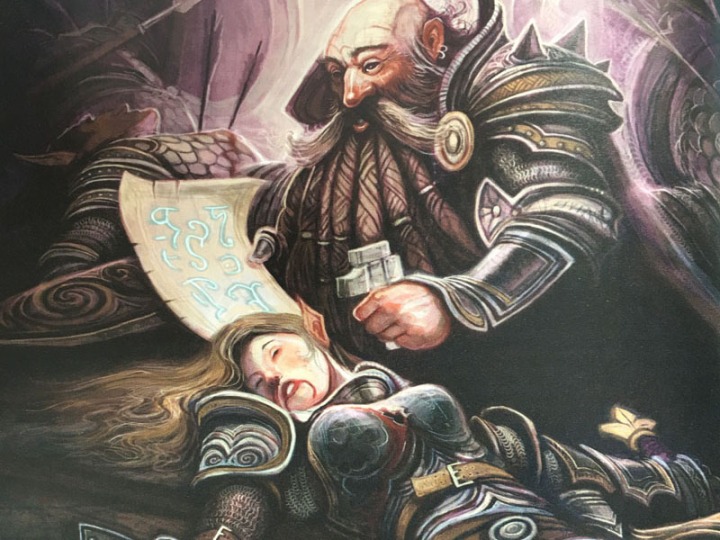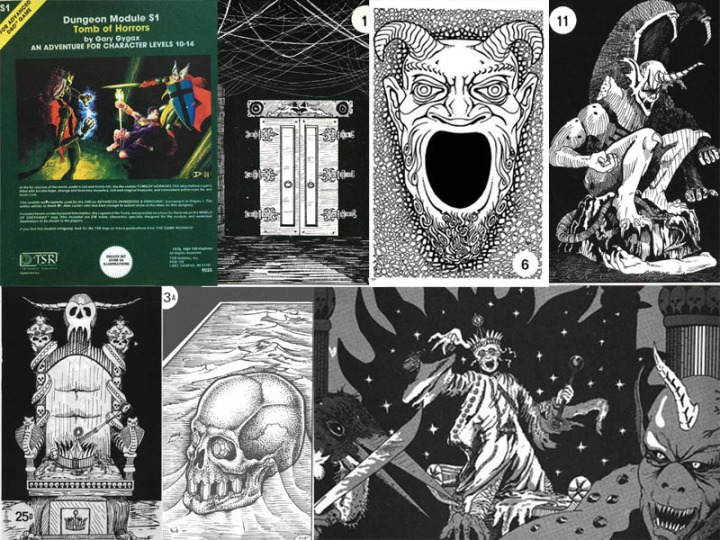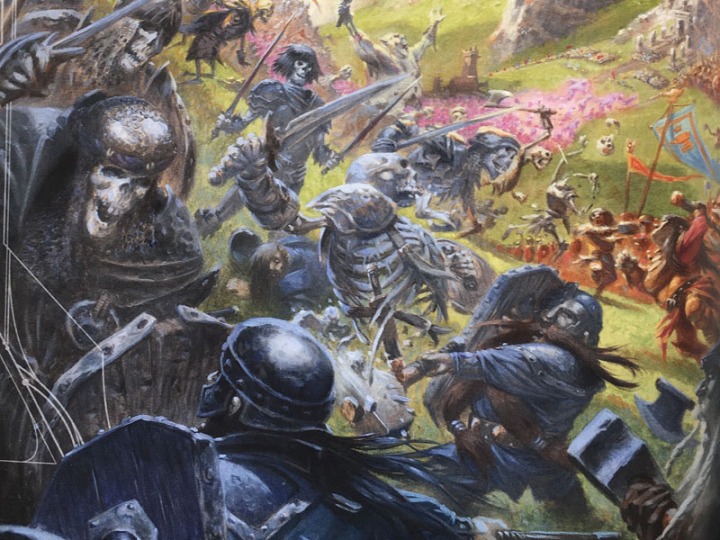Today we explore the 5th edition rules on healing, resting and dying to answer the question: is death meaningless?

In the middle of battle, the Fighter uses his Second Wind ability to magically restore hit points. The Thief can choose to dodge half his damage once each round. The Bard can sing soothing words to heal his companions. Virtually every character class has access to a variety of healing spells. Even dropping down to 0 hit points (i.e. Death) is no big deal thanks to Death Saving Throws and easy access to Revivify spells. And after the battle, the rules for Long and Short Rests make it virtually impossible for a DM to sustain the notion that combat is dangerous and death is eminent.
For all of its strengths, 5th Edition D&D has far too many opportunities to heal the player’s character and help them survive what should be certain destruction. But why? And how do we fix it?
In the old days of Advanced Dungeons & Dragons, death was a far more persistent and permanent problem. If you dropped to 0 hit points, you died. The End. If the rest of your group really wanted to try and save you; they had to drag your corpse back to town, find a 9th level cleric, pay him over 5000 gold to cast Raise Dead and then you still had to pass a Resurrection Survival roll to see if you could come back to life. Playing with swords and arrows and fireballs is dangerous and should not be taken lightly.

But death was not as pervasive as people seem to remember it being. Within most campaigns, character death was pretty rare. The main reason is that most DMs have no desire to arbitrarily kill your character. We want to see your character succeed as much as you. There were (and still are) some DMs that run a gritty, deadly, low-fantasy campaign and character death is a way of life. But in most high-fantasy campaigns, death is the exception not the rule.

Also, bear in mind that most of the classic “Killer Dungeons” such as “Tomb of Horrors”, “The Hidden Shrine of Tamoachan”, and “Against the Giants” were never intended for campaign play. They were tournament modules used in competition at roleplaying conventions. They were played using disposable pre-generated characters and the dungeons were exceedingly deadly to test the players’ ability to avoid fool-hardly choices and still survive. Your score was based upon how quickly you got out of the dungeon alive, how little damage you took, and how many dangers you avoided. Killing the villain, defeating evil, leveling up, finding treasure, and furthering the plot were never the main purpose. In fact, those actions would usually get you killed in competition but they are exactly why we play D&D in the first place. Competition modules and campaigns do not mix.

These dungeons also created the myth of the Total Party Kill or TPK. Of course, these dungeons had a lot of TPKs because that separated the winners and losers. When these modules were released to the public, they always had a warning about the deadly nature of the module and suggested to use new, and thus disposable, characters. If you foolishly played them with your beloved campaign characters, they would likely die as well. But in regular play, what was the point of a TPK? If everybody died then who would tell the tale of their sacrifice? TPKs make horrible stories; somebody has to survive.
All these modules were included in the recent Tales of the Yawning Portal compilation, which further led people to believe that death was inevitable in the old days. But the majority of modules, especially all the module series, such as “Desert of Desolation”, the “Avatar Crisis”, and “Dragonlance”, were written such that the same characters survived each adventure.

But by the time 4th edition D&D arrived, the game had become very tactical, deadly, and “real”. Character mortality was at an all-time high. But D&D is not and should never be Warhammer. Wisely, Wizards of the Coast realized this and they were determined to bring back the high fantasy, epic storytelling aspect of the game.
Yet, despite the fact that DMs have been keeping players alive for decades now, they felt that the game needed a bunch of rules to keep them from becoming perished. Basically, the problem boiled down to two things: Death sucks and Healing is boring.

I won’t rehash all the rules you should already know. Just understand that in 5th edition D&D, character death is unlikely and healing is laughably unrealistic. There are some optional rules in the Player’s Handbook that add an amount of realism to the game, but they also kill the flow of the narrative. We need a happy medium.
Of course, all of these homebrew rules are just suggestions to be used or ignored as you see fit. I’ve left all of the class abilities intact as most of them are quite good. And I’ve kept a Short Rest as 1 hour long and a Long Rest is 8.
- After 3rd level, if a character falls below 5 hit points, they fight with Disadvantage. This reflects that he is severely injured and unable to fight as effectively.
- If a character does not have the Medicine proficiency, his attempts to Stabilize another has a DC of 15 (not 10).
- A Short Rest heals 1 Hit Dice of health lost at 1st level, 2 Hit Dice at 5th level, and so on. Taking a nap does not heal you full. You can only take one Short Rest per day.
- During a Short Rest, a spell-caster may elect to heal or choose to study and regain spell levels equal to the character level. A 2nd level wizard can regain a single 2nd level spell, or two 1st level spells, etc.
- A Long Rest heals the maximum number of Hit Dice, but the player must still roll to see how many hit points are regained. A 5th level fighter would heal 5d10 (5 – 50) hit points during a long rest. All spent spell slots are regained. This is the rule I most often ignore, and just say that everyone is healed fully.
- If a character is knocked unconscious and makes Death Saving Throws; upon waking, he must make all rolls with Disadvantage until he takes a Short Rest.
- Any character that is killed and revived via Revivify must complete a Long Rest before performing any action beyond basic needs. The cleric performing Revivify must also take a Long Rest.

Feel free to add any further restrictions as you deem fit, such as healing kits, lingering injuries, or constitution saves when using raise dead or resurrection. It’s your world, make it work for you. But it is also your player’s world, make it fun (but not so safe) for them.
As always, Proceed at your own risk if you decide to rest in a dungeon, and Game On!
Never go against a Sicilian when DEATH is on the line – Vizzini

Reblogged this on DDOCentral.
LikeLike